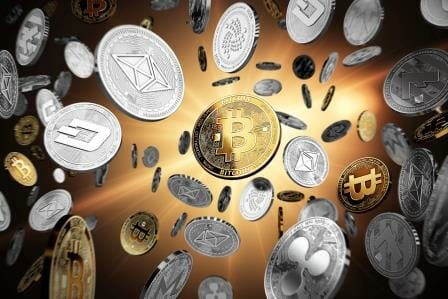The world has seen a handful of era-defining inventions and developments in the last 100 years. Radio, television, personal computers, and Internet are some of the most prominent, but now, it may be the turn of blockchain technology to shine.
That is the opinion of blockchain startup IDA, which defends that assets tokenization is the future of finance and the next relevant hurdle that the approach has to clear in order to be considered part of a worldwide solution.
IDA is helping the industry by creating the platform that will allow people, individuals or businesses, to digitize items in the real world. The initiative itself explains that it focuses on developing links between digital and physical, tangible economies.
Tracking Resources and Preventing Waste
The blockchain technology and digitizing tokens would allow, according to the project leaders, people to track resources and prevent waste while creating a transaction record. The initiative of whitepaper explains that digitized assets will become the most important factor driving growth and evolution in the global economy and financial landscape.
Digitized assets promote easier circulation of goods, which will also provide opportunities for small and medium enterprises to be more involved and to get some much-needed financing. IDA will foster a data-driven ecosystem, merging various emerging technologies and approaches to its digitized asset blockchain.
Some of the mentioned technologies and approaches to be included in IDA’s idea are artificial intelligence (AI) and the Internet of Things (IoT.) The latter is, according to the project team, “advancing new applications of using sensors to track and gather information from real objects.”
Several sectors can reap the benefits of implementing an asset digitization approach. For example, industries can, according to specialized crypto and blockchain site Cointelegraph, welcome creative business models and welcome innovation via automated processes. The automobile and transportation industries also stand to be benefited, as will academia and education. In fact, the last two have a special meaning to IDA, as the company states that “digitizing intellectual assets has created a strong network effect for knowledge sharing.”
Lowering Entry Barriers
IDA defends its choice of blockchain technology to follow its asset digitization objectives, saying that it can help lower the entry barriers for all actors involved, including businesses and consumers, by driving down costs and making sure users can understand the ecosystem. And, as a bonus, the assets can be tracked and identified easily thanks to blockchain.
There will be two native coins in the IDA ecosystem. One will be the IDA token, which will be the “bridge with the real world,” and the MRT tokens will be the digital assets linked to real-life, physical goods.
The IDA coin will use the Ethereum ERC20 token standard, with the full name of International Digital Asset. The token represents the only mean of settlement on the IDA platform, so demand and value will grow with increased exchange volume. And, as additional real assets anchored to MRT on the platform increase, the augmented circulation will raise the value of the IDA token.
There are similarities between the IDA project as a crypto initiative and the US dollar, because the two currencies are meant to be “insulated” against volatile markets.
By Andres Chavez











